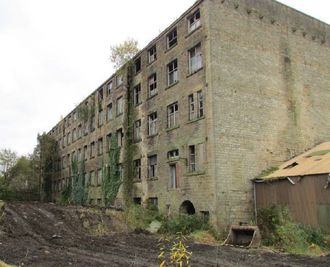Woods Mill, Milltown, Glossop, Derbyshire. Archaeological Works (OASIS ID: centrefo4-336078)
Simon Hinchliffe, Chris Wild, Rachel Reader, Ian Miller, 2019. https://doi.org/10.5284/1053674. How to cite using this DOI
Data copyright © Simon Hinchliffe, Chris Wild, Rachel Reader, Ian Miller unless otherwise stated
This work is licensed under a Creative Commons Attribution 4.0 International License.
Primary contact
Centre for Applied Archaeology
University of Salford
Centre for Applied Archaeology
Joule House
Salford
M5 4WT
United Kingdom
Resource identifiers
- ADS Collection: 3458
- DOI:https://doi.org/10.5284/1053674
- How to cite using this DOI
Introduction

Salford archaeology within the Centre for Applied Archaeology at the University of Salford, was commissioned by Glossop Land Ltd to carry out a programme of archaeological works in advance of the development of the Woods Mill complex, Glossop, Derbyshire. The proposed works included the demolition of a cotton mill that was part of the 19th century Howard Town Mills Complex and the redevelopment of the site for residential, retail and office use.
The site was occupied from 1803 by a water-powered cotton mill, which was destroyed by fire in 1842. The mill was subsequently purchased for use by John Wood, who redeveloped the site as the Howard Town Mills. The complex was slowly expanded eastwards until, at its height, it was employing 8000 people and was the largest integrated cotton spinning and weaving complex in Derbyshire. After John Wood died in 1854, the mill entered a slow decline until it was sold off in 1919. Although the western half continued in use as a cotton mill, the eastern half was taken over by Volcrepe Rubber in 1932, who continued to operate on the site until 2002.
This archive contains the results of the archaeological investigations undertaken by Salford Archaeology within the Woods Mill complex. This includes a level III building survey of the Narrow Spinning Mill and a report of the survey and excavation results, amalgamated into a single narrative that presents the archaeological evidence for the development of this important mill complex.





